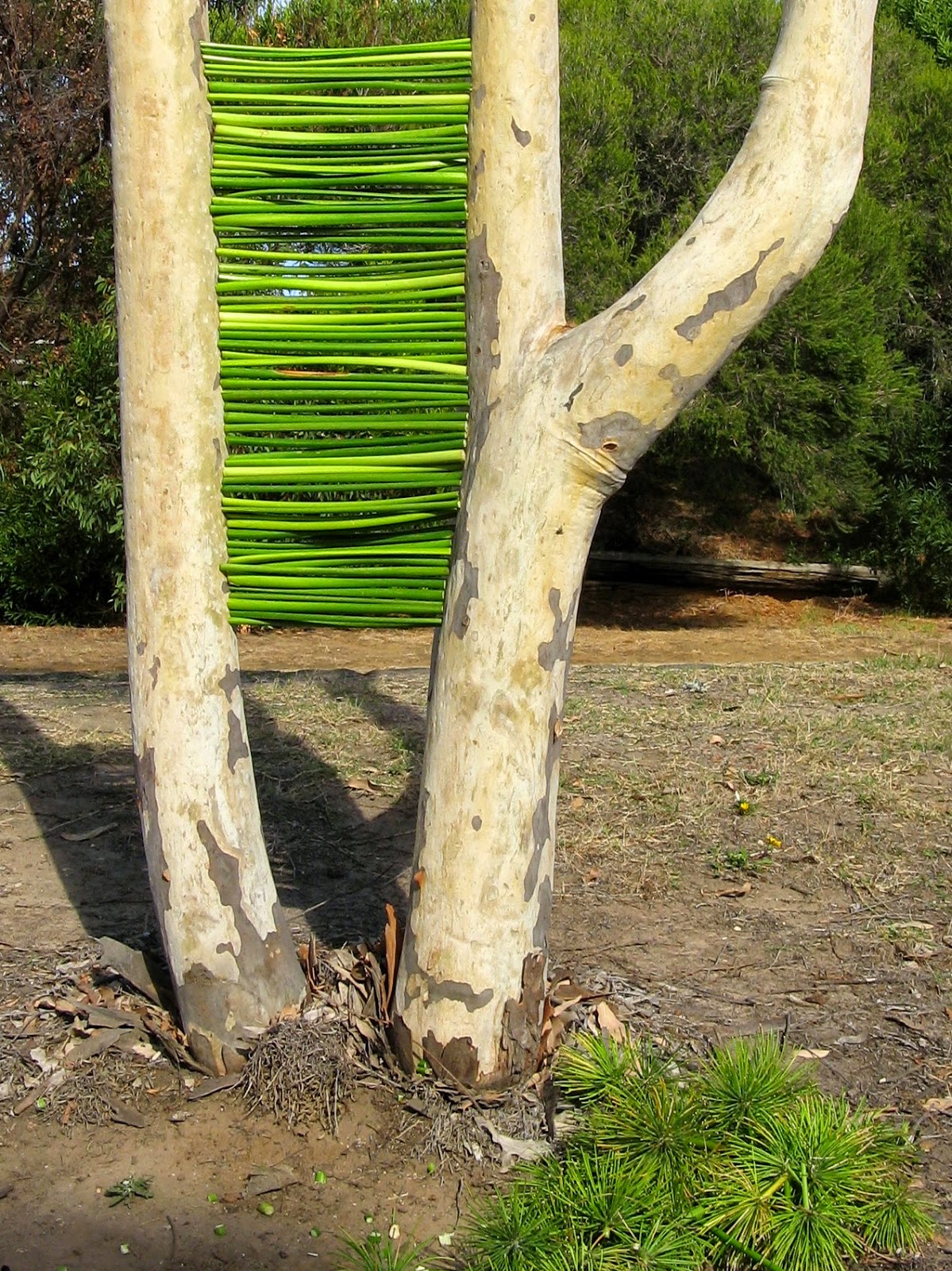Following on from last week's posting, I thought I would show additional ways of using agapanthus. The interesting thing is that even after the flowering has finished this plant still has plenty to offer. In the photo below you can see a large bucket of agapanthus stems that I collected from a friends garden.
I spent two hours removing the seeds from the heads. In the process I filled this bucket with seeds, which I am now carefully composting so that they don't grow. As I mentioned previously, agapanthus is an environmental weed in this part of the world. I want to dry the material for later use.
In the mean time, here is a small out-door environmental sculpture * I created using agapanthus stems and flower heads. Environmental sculpture is a site specific work that relates directly to the place in which it is created and is intended to change our perception of, or response to, the site where it is placed. The sculpture would be diminished or irrelevant if it were transferred to another place. One version of the sculpture is shown below.
For practitioners of the Sogetsu School of ikebana what I have created will be recognised as conforming to one of the exercises or our curriculum; which is 'disassembling and re-arranging' the material. The exercise requires us to study material carefully, identify its component parts, separate them and create a work using the discrete elements arranged in a different way. This exercise, along with a number of others in the curriculum, causes us to look closely at botanical materials and pay attention to their many characteristics which includes: colour, form, texture, flexibility, strength, weight and so on. Here is another slightly different version of the sculpture.
The better we understand the materials we use the more we can express with them. This sculpture was created between two trunks of a eucalyptus beside a busy road.
Greetings from Christopher
7th March 2015
* Click on the blue text for further information



It is interesting to read that agapanthus is an environmental weed where you live. I envious of the copious amounts of it you are able to gather and use because I can’t grow it in my clay soil.
ReplyDeleteI really like what you did with it in your outdoor environmental arrangement.
Dear Gail,
ReplyDeleteit seems always the case that we want to grow the things that we can’t don’t you think? There are so many things I wish for that require a much wetter climate than we have here. However, I am deeply grateful that I don’t have to endure months of snow and there is always green in our garden. I am looking forward to showing other environmental sculpture on the blog. Keep watching!
Regards,
Christopher